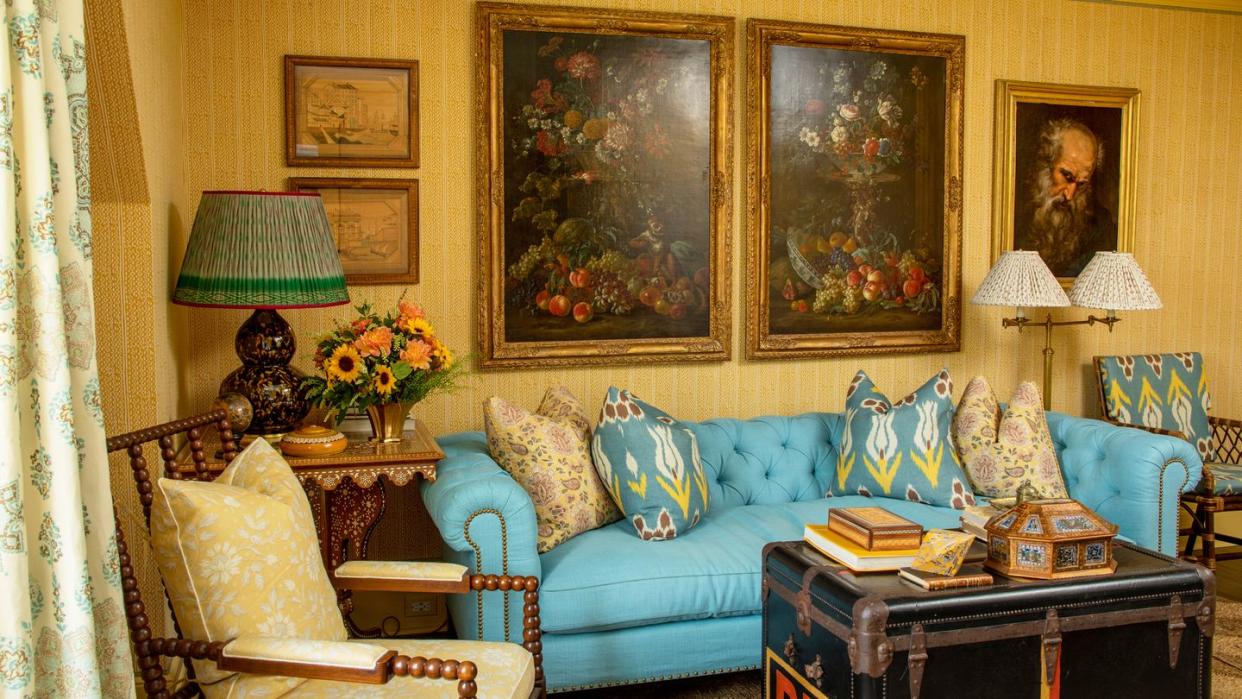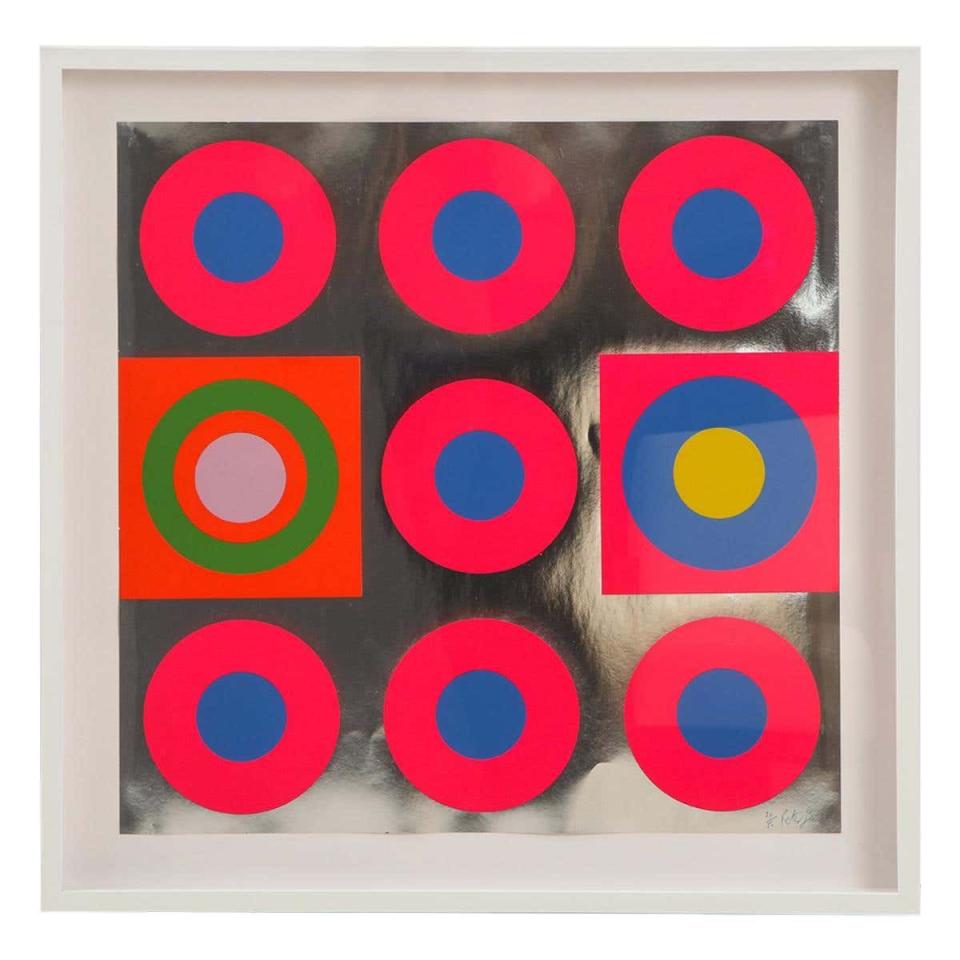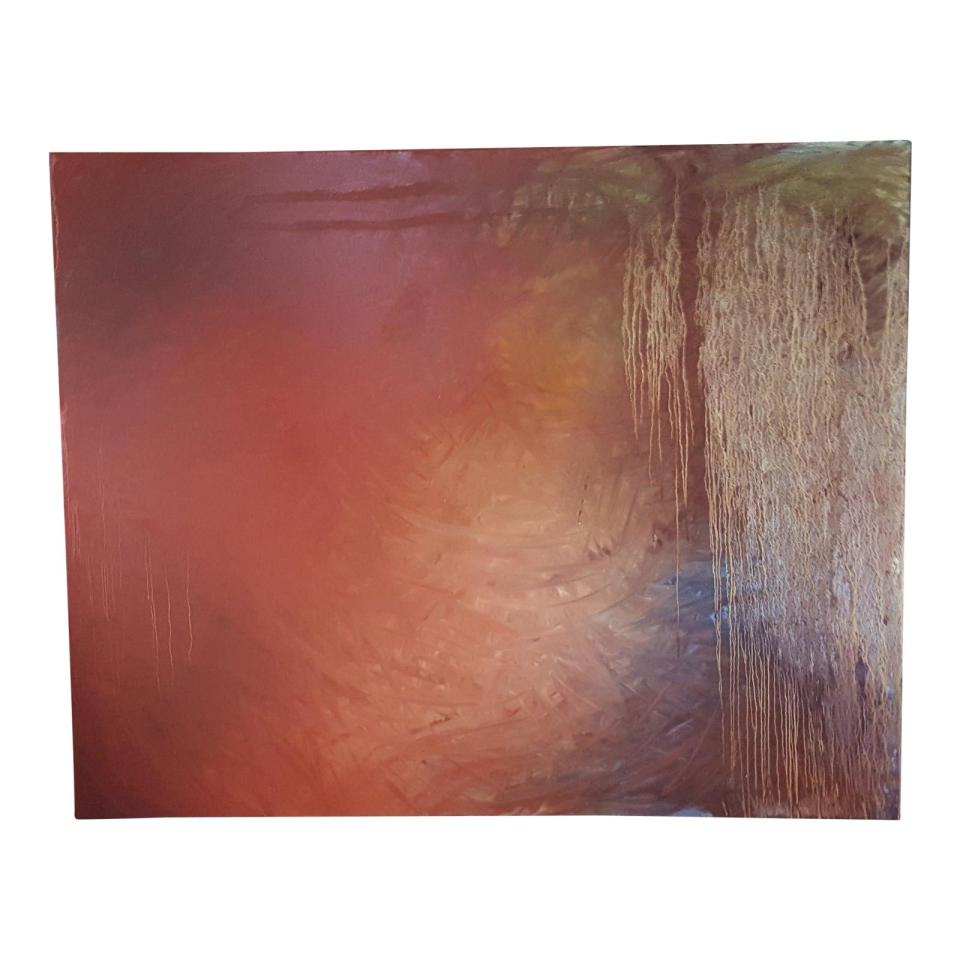How the Art We Choose for Our Home Affects Our Emotions

"Hearst Magazines and Yahoo may earn commission or revenue on some items through these links."
If you’re a lover of landscapes, you can attest to the transportive power of art. There’s no need to “close your eyes and imagine” a French countryside or coastal escape when masterful artists do all the work for you. One look at descriptive scenes painted in rich hues with delicate brushstrokes, and we can almost smell the lavender fields in Provence and feel the ocean breeze.
Far beyond visual stimulation, art has the power to stir our souls. Fresh perspectives can inspire us and bring hope in tough times.
“When we see art that we find pleasing, it gives us a dopamine rush,” says Susie Hodge, the bestselling writer, art historian, and artist who wrote How Art Can Change Your Life. “If we really like it, it arouses similar euphoric emotions to those we feel when we’re in love and looking at the object of our love.”
Ready to take art appreciation to a new realm? Read on for a few ways art can heighten your senses and usher in a new awakening.
How Art Affects Our Emotions
It can bring us joy.
Cameron Jones is a Raleigh, North Carolina-based decorator known for colorful, eclectic designs that mix patterns, periods, and styles. When she works with her clients to design spaces in their home, she often starts by asking them how they want to feel when they’re in that space.
If it’s a bedroom and they want to feel calm and settled, shades of green can be soothing and peaceful. Blues and shades of creams, whites and taupes are also a safe bet. Colors that remind people of nature, specifically areas near water can help evoke feelings of serenity.
In the breakfast room, on the other hand, where people want to start the day energized and alert, a sunny yellow could be the mood-booster they need. And in the dining room where they’re hosting friends and family, they may be drawn to oranges and reds, hunger-inducing colors restaurant brands have long capitalized on.
“But just because you like yellow or orange doesn’t mean you want to go full-throttle with a yellow or orange wall,” Jones says. In that case, art can be a useful decorating tool to add just the right amount of color, even if all of the other furnishings are relatively neutral.
And as painter Agnes Martin (1912-2004) showed, sometimes all it takes is a pop of color—or a solid block—to achieve the same affect.
Throughout her life, Martin suffered from schizophrenia and depression. According to Hodge, Martin wanted to help viewers replace their stressful feelings with calm, positive thoughts. Her answer? A soothing, blue color block. She designed Night Sea, a painting on display at the San Francisco Museum of Modern Art, to elicit an uplifting response.
Henri Matisse also famously used color to enhance wellbeing, both in himself and the people who viewed his art. Says Hodge, “One of Matisse’s last statements expressed his beliefs about the effects of painting: ‘Colors win you over … a certain blue enters your soul. A certain red has an effect on your blood pressure.’”
Just look at Black in Deep Red, an oil painting by Mark Rothko, another abstract artist known for his bold use of color. Rothko floated large rectangles of colors, layering stains of pigment, explains Hodge. “Rothko said that he was interested only in expressing basic human emotions, and he noted that many of his viewers cried when confronted with his paintings.”
Jones has seen the positive emotional impact of colorful art, and she always suggests people think strategically about how they use color in common spaces where they’re greeting guests. “When people walk into a really colorful room—whether it’s colorful because of its art and textiles or because of the wall color or wallpaper, the phrase they typically come out with is, ‘Wow, what a happy space.’ And don’t we all just want to be happy in our homes?”

Peter Gee Pop Art Silkscreen
£12000.00
1stdibs.com
It can make us feel cool, calm and collected.
Just as people’s responses to certain colors aren’t wide-spread, neither are their emotional reactions to types of art. The same impressionist painting that gives one person a dopamine rush could elicit feelings of anxiety from another person who remembers it from a dreaded aunt’s living room.
“I’ve given talks on how art makes us feel and what we might choose for our own environments—whether we want peace, excitement, fun, brightness, a story, a bold statement, something shocking and irreverent or perhaps something that makes us uncomfortable,” says Hodge. “We each bring our own experiences to whatever we look at, and this affects our interpretations of all art.”
It is precisely because art is subjective that “it makes it wonderful and difficult to design around all at the same time,” Jones says. “Interpretation is so personal, it tends to conjure memories and thoughts and imaginative ideas.”
Jones and Hodge agree that some qualities of abstract art tend to induce a predictable emotional response. “I’ve found that clients tend to feel calmer around abstract art with rounded shapes and softer lines,” Jones says.
And in general, soft colors and edges, smooth lines, circles, or a horizontal emphasis are calming and peaceful, adds Hodge. “Jarring or bold colors and patterns, sharp angles and heavy, jagged lines can make one viewer feel energized and another feel anxious or even angry.”
According to Jones, “There’s something so deeply personal about art and how it speaks to people’s emotions. Our homes are our sanctuaries and our safe havens, and so it is only natural that we display the art that makes us feel our best, our happiest, our most memorable. That looks entirely different to each person, and that’s what makes every home so uniquely special.”

Modern Original Art Abstract Oil Painting
$1295.00
chairish.com
It can inspire us.
Sometimes, we find inspiration in the mundane. The pop art master, Andy Warhol, proved it with a can of Campbell’s soup. “He said he depicted it regularly because he ate it every day for 20 years. Anyone, rich or poor, could buy it, and it was the same for all,” says Hodge. “If anyone is feeling in need of inspiration, this painting shows that anything is possible, as long as they are open to new ideas and ways of thinking.”
Hodge believes that when it comes to art’s impact, setting is important, too. “When some art is displayed in a gallery or museum, we might feel reverence for it, for example, but if the same work of art was displayed say, in a small spare room, we would probably be less impressed and might ignore it,” says Hodge.
Jones loves working with clients to style bookshelves or coffee tables, and she encourages people to reconsider the positioning of everyday objects that may have sentimental value. “I don’t think art has to be a picture hanging on the wall,” she says.
“I love to create vignettes that give prominence to objects that bring people joy. Maybe it’s a small wooden bowl filled with seashells from their vacation, or maybe it’s a framed needlepoint passed down from a family member. The point is, when we surround ourselves with everyday objects arranged in a way that makes us feel good, we in turn feel happy in our home.”
You Might Also Like

